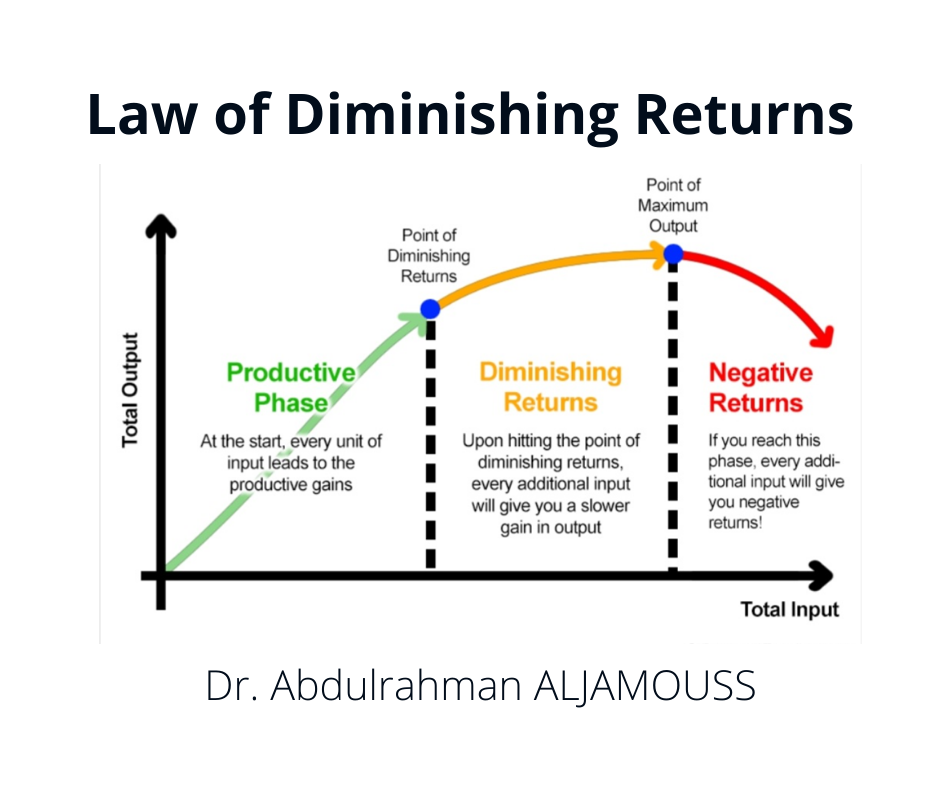The Law of Diminishing Returns
The Law of Diminishing Returns
Dr. Abdulrahman ALJAMOUS
You might have heard of the proverb: ‘Too many cooks spoil the broth’. The law of diminishing returns discusses this in the context of production. What happens when we keep on adding inputs and exceed the quantity required for optimum production? Let’s find out.
The law of diminishing returns, also referred to as the law of diminishing marginal returns, states that in a production process, as one input variable is increased, there will be a point at which the marginal per unit output will start to decrease, holding all other factors constant. In other words, keeping all other factors constant, the additional output gained by another one unit increase of the input variable will eventually be smaller than the additional output gained by the previous increase in input variable. At that point, the diminishing marginal returns take effect.
.png)
KEY TAKEAWAYS
- The law of diminishing marginal returns states that adding an additional factor of production results in smaller increases in output.
- After some optimal level of capacity utilization, the addition of any larger amounts of a factor of production will inevitably yield decreased per-unit incremental returns.
- For example, if a factory employs workers to manufacture its products, at some point, the company will operate at an optimal level; with all other production factors constant, adding additional workers beyond this optimal level will result in less efficient operations.
